Identifying genuine antiques isn’t always simple, even for seasoned collectors. Developing a keen eye for authenticity can help you avoid reproductions and clever fakes flooding the market. Follow our guide on how to spot a fake antique to distinguish true antiques from convincing imitations.
Key Characteristics of Genuine Antiques
Genuine antiques possess several distinguishing features that set them apart from reproductions. By understanding key characteristics, mastering visual inspection methods, and learning physical assessment techniques, you’ll be better prepared to spot genuine treasures and avoid costly mistakes. Understanding these features can help to identify authentic pieces.
Age and Patina
One of the most telling signs of a genuine antique is its patina—a surface appearance that develops over time due to age, use, and exposure to the elements. A true patina has a warm and variable surface that can’t be easily replicated by artificial aging techniques. It’s the result of years of handling, polishing, and natural oxidation processes.
When examining an antique, look for signs of consistent wear and aging across the entire piece. Genuine patina should appear organic and uneven, with darker areas in crevices and lighter spots on raised surfaces. Be wary of pieces with uniform coloration or an overly perfect aged appearance, as these may indicate artificial aging.
Materials and Craftsmanship
Authentic antiques often feature materials and construction methods that differ from modern pieces. For instance, old wood furniture may use solid hardwoods rather than veneers or particleboard. Examine the joinery techniques, such as dovetail joints in drawers or hand-forged nails, which can indicate age and craftsmanship.
Pay attention to the overall quality of workmanship. Genuine antiques, especially high-end pieces, often showcase superior craftsmanship with attention to detail that may be lacking in modern reproductions. Look for signs of hand-crafting, such as slight irregularities in carvings or uneven tool marks, which can indicate authentic period work.
Provenance and Documentation
Provenance—the history of ownership and origin of an antique—is often a powerful indicator of authenticity. Genuine antiques may come with documentation such as receipts, family records, or certificates of authenticity from reputable dealers or auction houses. While not all authentic pieces will have extensive documentation, the presence of verifiable provenance can boost confidence in an item’s authenticity.
Visual Inspection Techniques for Spotting Genuine Antiques
Developing a keen eye for visual details can help you spot genuine antiques. Use these techniques to assess pieces.
Form an Overall Impression
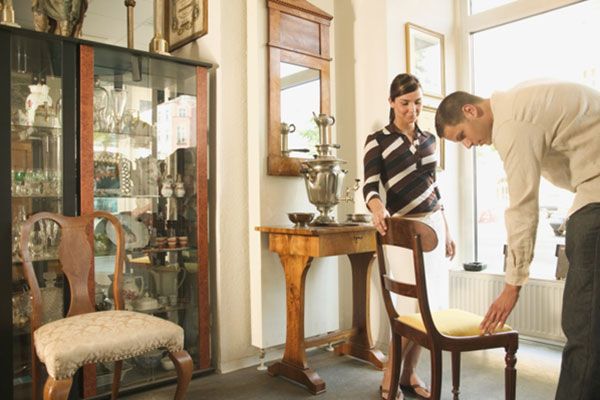
When evaluating a potential antique, start by stepping back and taking in the piece as a whole. Consider its design, proportions, and overall aesthetic. Ask yourself if all the elements work together harmoniously or if anything seems out of place.
For example, if you’re examining an antique mantel, assess whether the legs appear proportionate to the shelf. If the legs look too slender to support a wide shelf, it might be a composite piece or a reproduction. Trust your instincts—if something feels off, it’s worth investigating further.
Stand back and take a good look at the design, proportion, and materials. Then ask yourself if all the parts work together to create a harmonious whole.
Check the Patina
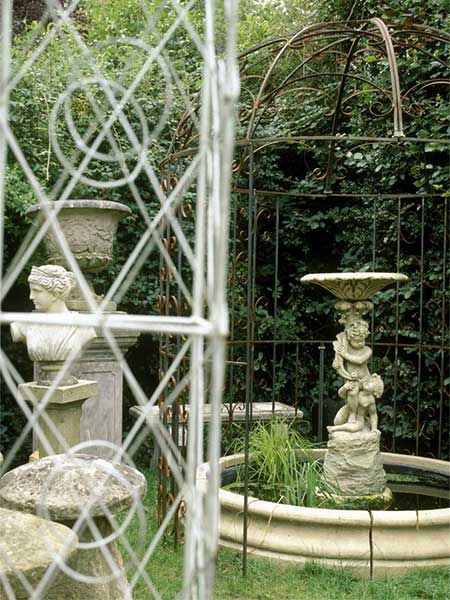
It’s a timeworn look developed from years of use—not by applying an antiquing solution or layering coats of new paint—that makes salvaged details so desirable. A true patina has a warm and variable surface, while a faux finish can look too perfect.
Look for a Maker’s Mark
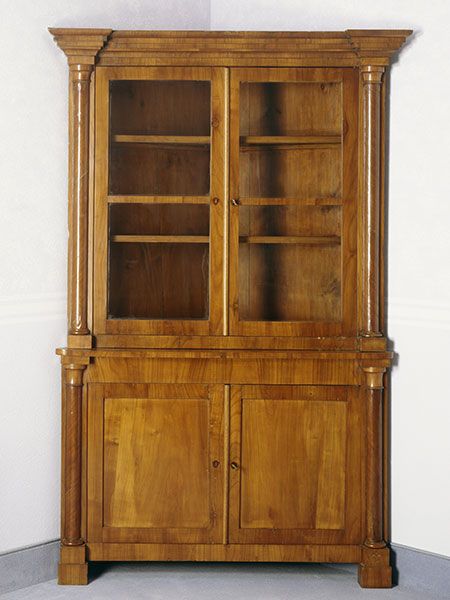
Many antiques bear marks that can help authenticate their origin and age. These marks might include a carpenter’s signature on wood built-ins, manufacturer’s stamps on furniture, or hallmarks on metalwork. Victorian-era ceramic wall tiles often have marks on their backs, while ornamental cast-iron pieces like planters or fountains may have marks in hollow recesses or on their bases.
Research the specific types of marks associated with the antique you’re examining. Keep in mind that while the presence of a maker’s mark can be a positive sign, it’s not a guarantee of authenticity, as it’s possible to forge some marks or add to reproductions.
Physical Assessment Methods When Evaluating Antiques
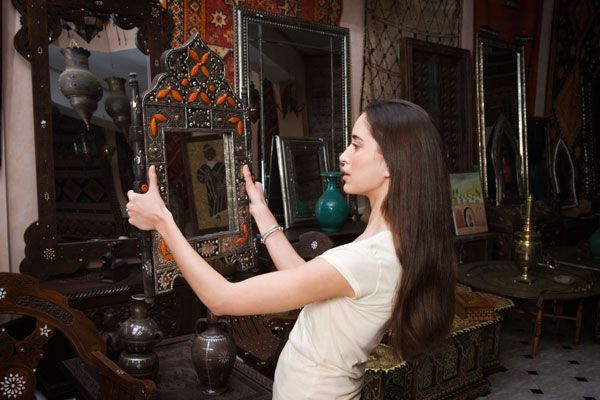
Beyond visual inspection, physical assessment can provide valuable insights into an antique’s authenticity.
Weight and Density Evaluation
The weight of an antique can often be a telling factor in its authenticity. Many genuine antiques are heavier than their modern counterparts due to the materials used in their construction. For example, old iron fencing tends to be significantly heavier than modern aluminum alternatives. Similarly, authentic garden ornaments made of stone will outweigh modern resin reproductions.
However, this rule doesn’t always apply to wood furniture. Solid antique wood pieces may actually be lighter than modern plywood or particleboard reproductions. When assessing weight, consider the expected materials for the period and compare them to what you’re observing.
Assessing Construction Techniques
Examine the construction methods used in the piece. Antique furniture often features joinery techniques that differ from modern methods. Look for hand-cut dovetail joints, mortise-and-tenon connections, or the use of wooden pegs instead of screws. These techniques can indicate age and authenticity.
For metalwork, check for signs of hand-forging or early machine production. Cast iron pieces should show mold lines consistent with period manufacturing techniques. Remember that construction methods evolved over time. Research the expected techniques for the specific period of the antique you’re evaluating.
Analyzing Wear Patterns
Authentic antiques will show wear patterns consistent with their age and use. Look for signs of genuine wear in areas where you’d expect to see them—on the arms and seats of chairs, around drawer pulls, or on the bases of statues. These wear patterns should be logical and consistent with the piece’s purported age and function.
Be wary of artificial wear that appears too uniform or in unlikely places. Genuine wear develops organically over time and should reflect the object’s natural use patterns.
Common Red Flags for Fake Antiques
Knowing what to look out for can help you avoid falling for clever reproductions or altered pieces.
Inconsistent Materials or Styles
One of the most common red flags is the presence of materials or stylistic elements that don’t match the purported period of the antique. For example, a piece claiming to be from the 18th century shouldn’t have Phillips head screws, which weren’t invented until the 1930s. Similarly, be cautious of furniture that combines different period styles in a way that wouldn’t have been historically accurate.
Pay attention to the types of wood, metal, or fabric used in the piece. Research the materials commonly used during the period in question and compare them to what you observe. Inconsistencies in materials can be a strong indicator of a reproduction or altered piece.
Suspicious Repair Work
While many genuine antiques have undergone repairs over their lifetime, suspicious or overly extensive repair work can be a red flag. Look for repairs that seem out of place or use modern materials inconsistent with the piece’s age. Well-executed period-appropriate repairs can actually add to an antique’s value and authenticity, but poorly done or anachronistic repairs may indicate a fake or heavily altered piece.
Be particularly cautious of repairs that seem to hide or obscure important areas of the antique, such as maker’s marks or joints. These could be attempts to conceal evidence of the piece’s true origin or age.
Artificial Aging Techniques
Some unscrupulous sellers may attempt to artificially age new items to pass them off as antiques. Be on the lookout for signs of deliberate distressing, such as uniform wear patterns, overly dark finishes, or intentional damage that doesn’t align with natural aging processes.
Artificial aging techniques might include using chemicals to create a faux patina, strategically applying paint to mimic wear, or even using tools to create fake wormholes in wood. These techniques often result in an appearance that’s too perfect or uniform to be genuine.
Tools and Technology for Antique Authentication
Modern technology offers several tools to aid in the authentication process.
Magnification Devices
Magnifying glasses, loupes, or digital microscopes can reveal details invisible to the naked eye. Use these tools to examine surface textures, tool marks, and small imperfections that can indicate age and authenticity. Magnification can also help you spot signs of artificial aging or modern manufacturing techniques that might otherwise go unnoticed.
UV Light Examination
Ultraviolet (UV) light is useful in detecting repairs, touch-ups, or modern materials in antiques. Some materials fluoresce differently under UV light, allowing you to identify areas that were altered or repaired. This technique is particularly useful for examining paintings, ceramics, and glass.
X-Ray and Infrared Analysis
For more valuable or significant pieces, professional authentication might involve x-ray or infrared analysis. These technologies can reveal hidden details about an antique’s construction, materials, and any internal repairs or alterations. While not typically available for casual collectors, these methods can help when dealing with high-end antiques or working with professional appraisers.
Seeking an Antique Expert’s Opinion
When in doubt, consulting with experts can provide valuable insights and confirmation of authenticity.
Consulting Antique Specialists
Antique specialists and dealers with expertise in specific periods or types of antiques can offer invaluable knowledge. They can often spot subtle details that might elude a less experienced eye. Consider building relationships with reputable dealers in your area of interest, as they can be excellent resources for learning and authentication.
Utilizing Appraisal Services
Professional appraisal services can provide detailed assessments of an antique’s authenticity, condition, and value. Look for appraisers who are members of recognized professional organizations and have expertise in the specific type of antique you’re evaluating. While there may be a cost associated with these services, they are often worth the investment for significant purchases or valuable pieces in your collection.
Attending Antique Shows and Auctions
Antique shows and auctions provide opportunities to learn from experts and compare pieces side by side. Observe how dealers and collectors evaluate items and don’t hesitate to ask questions. Many show organizers also offer educational seminars or authentication clinics that can enhance your knowledge and skills.
Price Considerations and Antique Market Research
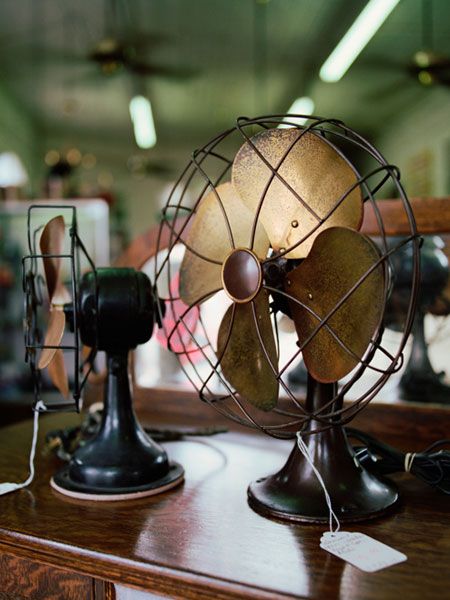
Research the current market values for similar antiques to get a sense of what a fair price might be. While a high price doesn’t guarantee authenticity, an unusually low price for a purportedly valuable antique should raise suspicions. Be wary of deals that seem too good to be true, as they often are.
Compare prices of similar items by using online resources, auction records, and price guides. When evaluating a potential purchase, use your smartphone to check online auction sites or antique databases for comparable pieces. This real-time research can help you make more informed decisions and spot potential discrepancies in pricing or descriptions.
While everyone loves a bargain, be cautious of antiques priced significantly below market value without a clear explanation. Sellers of authentic pieces generally know their value and price them accordingly. If a deal seems exceptionally good, take extra time to thoroughly authenticate the item before making a purchase.
Our Conclusion
Spotting genuine antiques requires a combination of knowledge, careful observation, and sometimes professional assistance. By developing your eye for authenticity, understanding key characteristics, and utilizing various assessment techniques, you can become more confident in identifying true antiques. Remember that authentication is often a process rather than a single definitive test. When in doubt, don’t hesitate to seek expert opinions or additional research.
